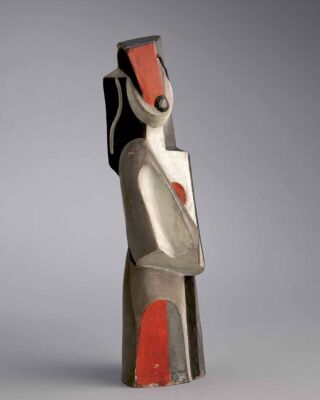“Damn, Cyla, this really is a Cubist Csáky!”
or some additional remarks by a pseudo-celebrity for the discipline of art history
Every spring, our author Gergely Barki presents us with a fantastic story of discovery. This latest tale, as it so happens, is not one story, but at least five, and it thus offers us a nice chance to amuse and amaze ourselves at our leisure in the time of coronavirus.
This is a story of a 21st-century research endeavour. And it is very much like the century itself.
I cannot – nor do I want to – write this story within the usual framework, so I apologize in advance to those who were hoping for a highbrow art historical excursus based on traditional methodologies, although I probably hinted in the title that I have no intention of offering anything of the kind. I sought an adequate form because I will discuss a great variety of events: a family history rich in dramatic and amusing turns of events, including stories of escape which involved outwitting invading Germans and French collaborators, losses suffered because of the Holocaust, experiences of discovery which came with a feeling of “eureka,” works of art lost and found, mysteries unsolved to this day, tangled interconnections that seem inextricable, the most noble declarations made by artists and evil deeds that were done to satisfy the lowliest desires, tabloid and high culture (haute culture), and even haute couture! There will be drawings, paintings, sculptures, photographs, and even artificial flowers and decorative buttons, not to mention jewellery made of synthetic resin.
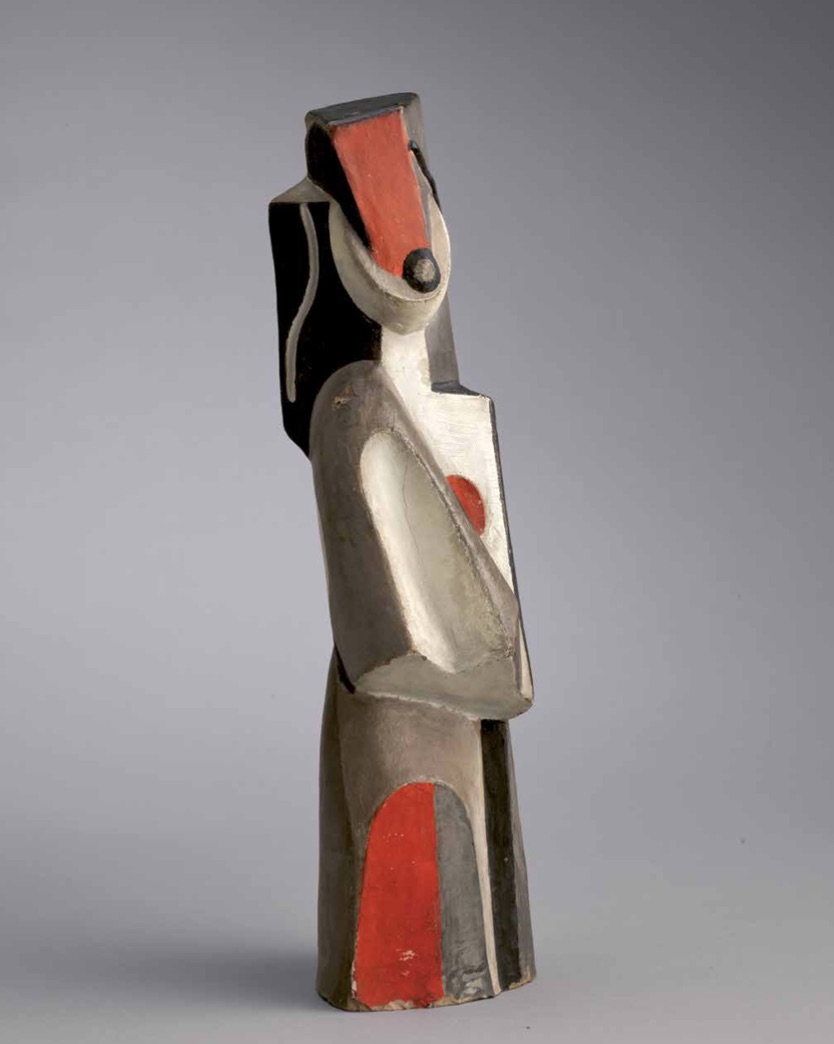
Cyber ’n’ bulldog methodology
My twin brother, Martin, who lives in Stuttgart and also happens to be an art historian, sent me a text through Messenger the evening before his name day – presumably right before putting the goose in the oven, because he also happens to be an excellent chef![1]
M.: “I grew up in an environment in which I was surrounded by fashion and art. My great-grandfather was the painter Rezső Bálint, my great-grandmother had a picture gallery in Paris. Endre Ady, Béla Czóbel, Joseph Csaky, one of the greatest Hungarian Cubist sculptors, belonged to the family’s circle of friends. I spent a lot of time with my grandmother in Paris and her aunt, Éva Révai, who designed accessories for big fashion houses.”… Do you know this guy?
G.: Who is this?
M.: Csaba Kajdi, he might be interesting, I did a little research on him, and apparently Czóbel courted his great-grandmother.
G.: I’ve never heard of him, but I have done research on everyone he mentions, I’m especially interested in Rezső Bálint. Where did you find this?
M.: https://168ora.hu/eletmod/a-sz...
G.: Cool! Thnx
(Then there was a video from the interview series I will take you for a ride by Kriszta D. Tóth.)
G.: RB’s brother had an important gallery in Paris. In addition to many works by Czóbel, there were also Modiglianis. They called him Berger.
M.: Prolly him
G.: I’ll look this guy up!
M.: I think he’ll be happy to hear from you
G.: Thanks for the tip!
M.: I hope he will bring something new to light
G.: No doubt!!!
When I mentioned the above chat at home during Sunday lunch, my wife, my mother, and my three teenage daughters dropped their spoons. Five pairs of female eyes were staring at me with the same immeasurably contemptuous look.
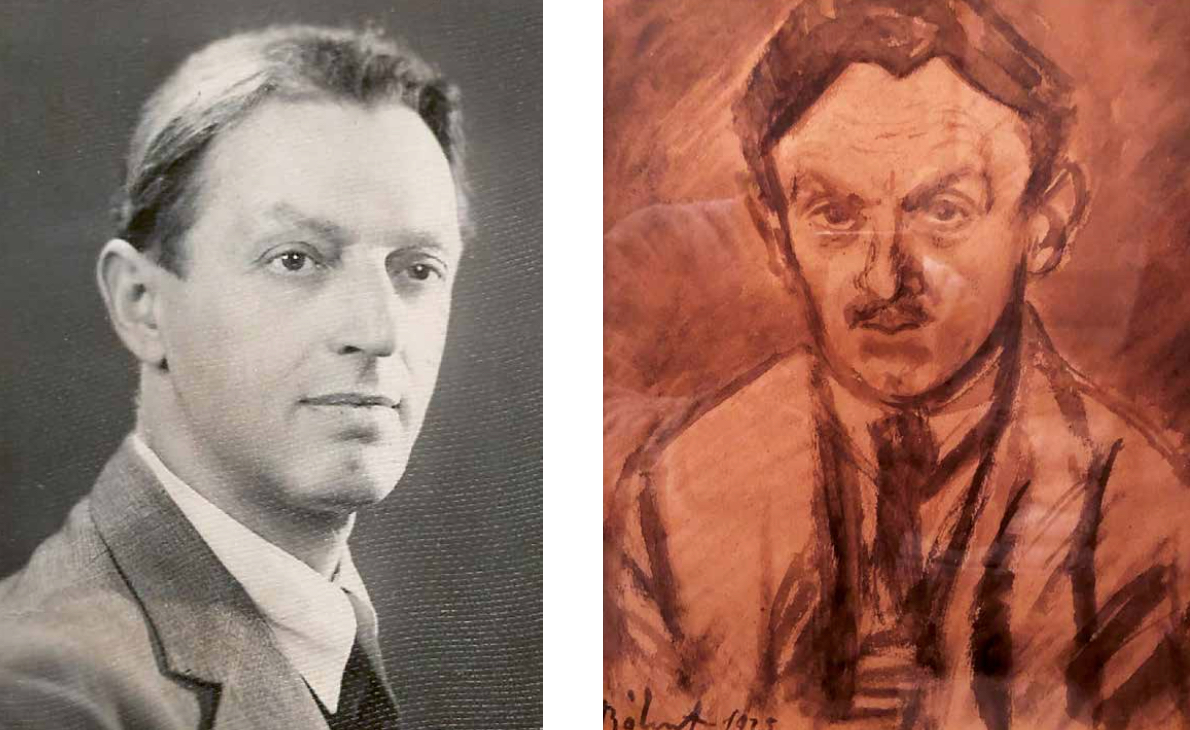
“You don’t know who Cyla is?” They sneered at me almost simultaneously.
As I mentioned before, this took place in mid-November, 2019. At the time, Cyla, aka Csaba Kajdi, already had more than 100,000 followers on Instagram, and numerous interviews had been done with him, since in recent years, several world class stars had emerged from his modelling agency and had gone on to walk on the most prestigious catwalks in the fashion industry and appear on the covers of exclusive international magazines. His popularity, however, is due more to his regular vlog on Instagram, in which he often holds up a mocking glass to the shallow Hungarian celebrity world, while of course also poking fun at himself and his own identity. Phrases from his vlog such as “Beat” (beat it!) and “Sayé” (ça y est! = This is it) are frequently used today, not only by schoolchildren and young adults, but even by the elderly in certain strata of society. Even some radio announcers have begun using this jargon, and these kinds of terms appear on t-shirts, caps, and accessories. At the time, I was ignorant of all this, and I am ashamed of this ignorance now. Today, the whole country knows who Cyla is. As one of the jury members of Look, Who am I? - The Stage of Mysteries, he has moved into the living rooms of Hungarian homes on Sunday evenings.
Our first meeting took place well before all this, but it didn’t come together as easily as I had anticipated. I sent him a friend request on Facebook, but nothing happened for weeks (although he still hasn’t confirmed me, hm, Cyla!). I wrote a lengthy introduction concerning the research I was doing and the things that would interest me in connection with him. Nothing happened for weeks. I asked for a phone number from one of our (then only pseudo-) common Facebook acquaintances (what a useful thing!!!) and called him as soon as I could.[2] I remember well: I was sitting in the car, about a thirty-five minute walk from my home.
After he had apologized for not having responded, all I had to do was press a button, and for some thirty-five minutes the history of his family poured from Cyla’s mouth, stories which he was convinced would certainly be of no interest to an art historian. I insisted that I was indeed very interested in what he had to say, and that it was exactly what I had been researching for almost twenty years, and while I know a lot about things he may well not know, even about his ancestors, the information he had to share was nonetheless entirely new to me.
He didn’t understand why I was interested in Rezső Bálint, for example, when no one had ever dealt with Bálint in much depth. As I later learned, he had been visited by museologists, art historians, gallery owners, and dealers before, but everyone had had some specific reason for seeking him out, and they had showed little interest in anything else, so of course he hadn’t shown them everything. It became clear that it would be worth getting together in person. If the crew of a documentary film had been sitting next to me, the director would have wiped his teary eyes and muttered, “That’s it, boys! Keep going, keep going!”
A Family History, Chapter 1.
The Bálints, that is, the Berger-Clan
I arrived at Mr. Kajdi’s apartment late in the afternoon on the following Sunday, where Sanyi, the French-speaking – sorry – French-understanding dog, greeted me amicably. From that moment on, the documentary crew’s camera could have continued to roll, for the anecdotes poured from Cyla’s mouth as he searched for photo albums, letters, and other documents in his apartment. In order better to understand the tangled relationships, I asked him for an impromptu oral family tree and network of artists, but this only made me dizzier, so we set off, walking around the apartment, and I continued to stare at everything like a fish in a bowl, passing from one wonder to the next.
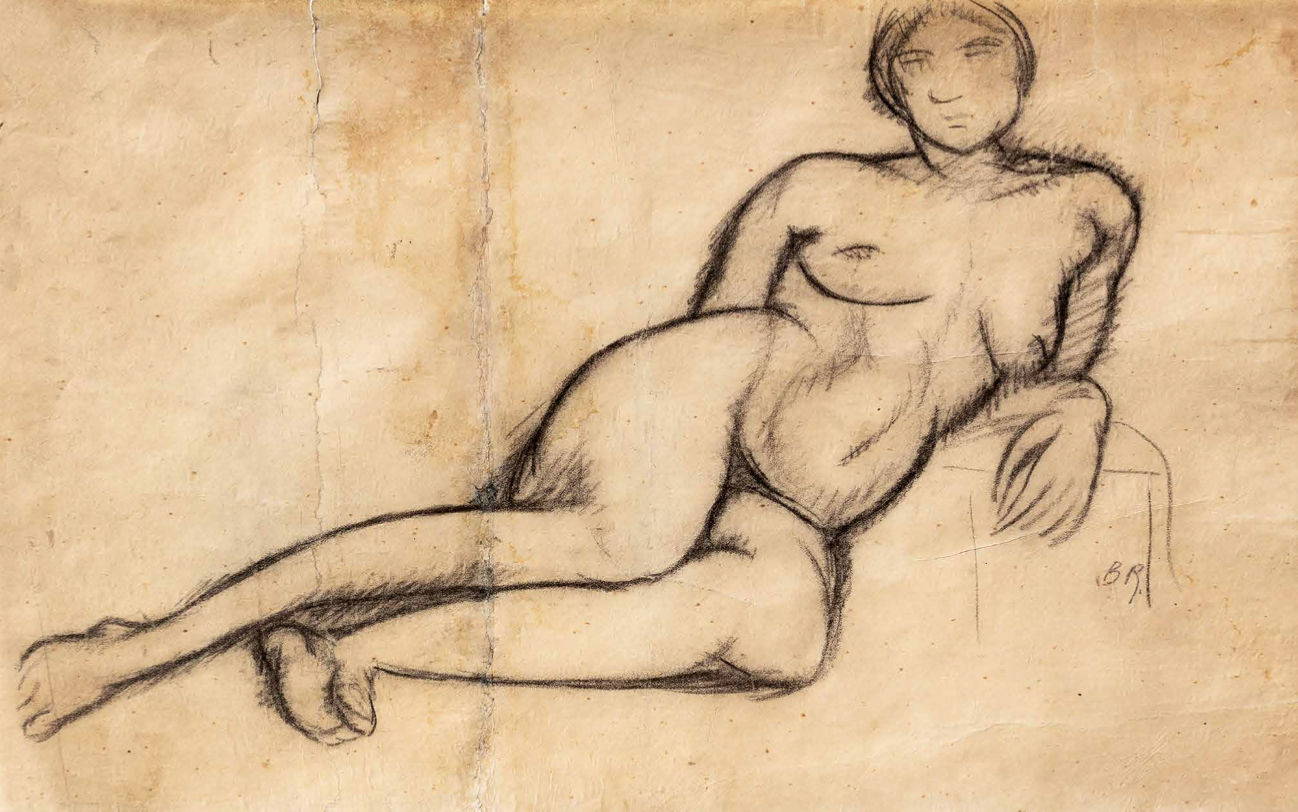
Let’s begin with the fact that it is true that few people have studied the life and work of Rezső Bálint apart from me. Ferenc Bodri is worth mentioning, perhaps, but he too didn’t go very deep, and he was interested in Bálint primarily because the Hungarian artist had lived next to Modigliani’s studio.[3] It was approximately 15 or 16 years ago, during the preparations for the Hungarian Fauves exhibition (Hungarian National Gallery, 2006), which has since faded into the fog of a heroic era, that I accidentally first stumbled upon Rezső Bálint. Sitting at my desk one evening, I realized that the image on one of the National Gallery’s inventory cards was in no way similar to the other paintings by Bálint, although it had been displayed as such in the 1996 Nagybánya exhibition (Hungarian National Gallery), which was also celebrated. The signature read RB, and the title of the painting was In the Park. In the photo reproduction, children are lounging on the grass in a truly park-like setting. As I stared at the tiny, black-and-white reproduction, it occurred to me that Róbert Berény, another painter with the initials RB, had exhibited his painting Enfants dans le jardin (Children in the Garden) in 1906 at the Salon d’Automne in Paris. I had previously believed this painting to be lost. On the inventory card, it said that below the signature there was an illegible inscription. However, I could read it: Tótfalu. Berény spent his summer in Tahitótfalu in 1906, and thus the puzzle was solved. Bingo! With the attribution of the painting to Bálint thrown out, it was clear that Róbert Berény had painted the picture. I later discovered that, in addition to having had the same monogram, they had lived close to each other on Városmajor Street at the same time, and Berény had even made a small pen and ink drawing of his painter colleague, Rezső Bálint.[4]
Stricken by guilt for having deprived poor Rezső Bálint of a painting, I assumed the task of writing a biography on him for the exhibition catalogue.[5] I searched for and studied the information on him for nearly two years, performing truly penetrating analyses. In addition to a wealth of sources, I also came across works that were thought to be lost, but the works reproductions of which I published in Artmagazin’s very first WANTED article have yet to turn up.[6] There was also a particular drawing of a nude which was reminiscent of the drawing style of the students of the Matisse School, and I badly wanted to find it and include it in the Fauves exhibition, as its significance was enhanced by the fact that it was also reproduced in the journal Nyugat (West) at the time.[7] The hair on my arm literally stood up as Cyla pulled it out from a corner and simply said, “This is Mamika!”
As I learned from him, at the beginning of his time at the Kecskemét Art Colony in 1912, Rezső Bálint met Juliska Windt (later to be Mamika), who was originally from the Nyírség and who later gave birth to his three daughters. More on her later.
He showed me several small pictures, watercolours, and pastels from the 1920s, 1930s, and 1940s which were unknown to me. In fact, when we drove over to his office in Városmajor Street that evening (and it can hardly have been mere coincidence that his office was in precisely that street!), there were more works by Bálint, also unknown, hanging on the walls.
I started asking him about Rezső Bálint’s brother Béla. I knew only that, under the name Adalbert Berger, Bálint’s brother had had a very important art business in Paris, which was the original name of the Jewish family.[8] Soon after having arrived in Paris, with a bit of help from his brother Rezső, Béla Berger had become the secretary, butler, and car washer to the painter István Farkas, and he had also sold smaller works by Farkas and his friends at the flea market in Paris. A few years later, he opened his own art gallery on the banks of the Seine. He sold primarily works by Gleizes, Gondouin, and Herbin, along with compositions by Robert Delaunay, of course, with whom he developed a close relationship. His art collection, which included a work by Modigliani and a work by Braque and boasted a number of paintings by Delaunay, Gondouin, and Czóbel, was also significant. I knew all this mainly from Béla Berger’s obituary, which was published in a newspaper in 1938,[9] and from the book In Light, In Storm by Zseni Várnai, in which there is a wealth of information about Rezső Bálint and the third brother, art critic Jenő Bálint, who discovered Várnai’s son, Gábor Peterdi.[10] I note in parentheses that a two-sided friendship portrait came to light a few years ago. On one side of the paperboard is Rezső Bálint’s depiction of Gábor Peterdi in profile, on the other is a self-portrait by Peterdi with a pipe.[11]
A Family History, Chapter 2
Juliska (aka Júlia Windt, aka Júlia Bálint (?), aka Julia Berger, aka Julia Kellermann)
Cyla also provided me with a useful information about Béla Berger: in the wedding photo of the eminent Parisian picture dealer, which hangs in a nice frame on his wall, almost the entire Berger clan is lined up. But as we were talking about art dealers, Cyla again mentioned Juliska, wife of Rezső Bálint (Berger), who was his great-grandmother and who also had opened a gallery in Paris in the 1930s. I knew nothing of this at the time, but I assumed that the two galleries were connected in some manner. As far as we know, Béla Berger had no descendants. We know the name of his wife from Várnai’s book, but there is no mention of any children. As for what happened to the works in the collection and the gallery, this is still a mystery, although in light of the important works mentioned above, it would be worth solving this mystery. Perhaps it can be assumed that after Béla Berger died, Juliska took over the artworks in the gallery, but we have no concrete evidence of this, at least not so far.[12]
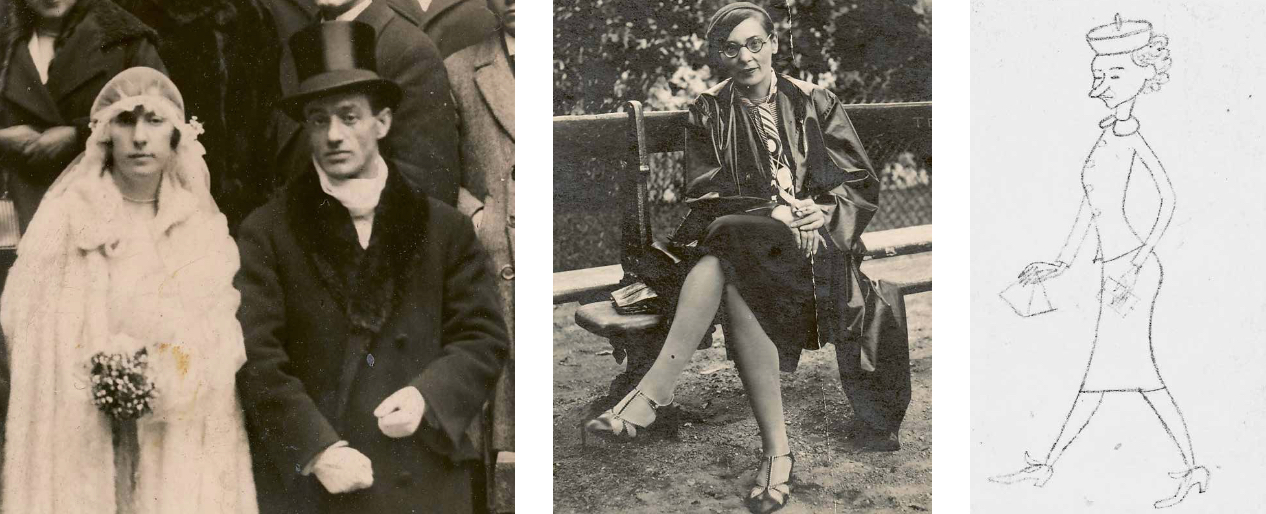
As for what happened to Cyla’s great grandmother Juliska’s gallery, Cyla was able to provide me with some information, and a few weeks later, I was even able to ask Cyla’s mother, Annamaria Básti, who lives in the south of France on the Côte d’Azur, for the threads of the stories and news of documents that were in her holding led me to her.
We met in Menton, a town only a few miles from the Italian border. I asked Cyla’s mother about the history of her family. I made an audio recording, roughly five hours of material, of the interview.[13] That’s when the threads really began to get tangled up, and I can only beg the reader to bear with me.
Annamari pulled out a yellowed letterhead that read, “Galerie d'Orsel, Tableaux modernes, Julia Berger, 16th rue d’Orsel, Paris.”
The emancipated great-grandmother – just look at the photo of her that was taken at the time – strangely was still using her husband’s, Rezső Bálint’s name, Berger, even though she had long since separated from him. The name Berger had a good sound to it, for Béla Berger (as Adalbert Berger of course) was regarded as second in line among the newly successful galleries in Paris after Léonce Rosenberg’s gallery. (Rosenberg had won renown as the most significant early collector and dealer of Picasso, Metzinger, Braque, and even the Hungarian József Csáky and a number of Cubist artists.) Juliska Windt therefore kept her married name when she went to Paris in 1929 at the invitation, incidentally, of her old love from Kecskemét, Dezső Kellermann (more on him later too).[14] She left everything behind, including her two small children, taking only the eldest, Ancsa, with her.[15] The jilted husband, Rezső Bálint, of course knew about the relationship between Juliska and Dezső Kellermann, but in the 1930s, he himself was in Paris for a longer period of time. The question, however, is whether Kellermann, who in Kecskemét had been essentially destitute but who in Paris had made a considerable fortune through the art trade, helped Juliska with her gallery on the Montmartre, or did she establish the shop on her own?
In either case, the Jewish-sounding name brought Juliska great hardship a few years later. During the German occupation of Paris, the Nazis requisitioned the gallery, and Juliska was forced to flee.[16] She was unable to take anything with her, but she still managed to rescue a small drawing by Leonardo with which she later could start a new life. Refugees from Paris usually made their way to the south of France, as Juliska did. She arrived in Nice via Besançon. As she fled, her lover, Dezső Kellermann, i.e. Désiré, who she had refused as a suitor in Kecskemét, was her companion. Juliska bribed the caretaker of a grandiose bourgeois palace located just a few blocks from the famous Le Regina on the Cimiez, the city’s wealthy district, to tell her if there were any apartments which had been vacated and left empty by former tenants. There were, so following the advice of the caretaker, she placed a toothbrush and a mattress in a state-owned apartment to indicate that it was already occupied. And that’s how they escaped being hauled off to a death camp. Many years later, in the 1950s or 1960s, Germany gave Juliska money as compensation for the confiscated gallery, but we may never know what works the Nazis took with them and whether the money provided by the German state actually covered value of the compositions which had been stolen.
A Family History, Chapter 3.
The Kellermanns and Czóbel’s Unusual Entrée
After a while, Juliska was able openly to accept the love of her youth, and in 1959, she married Dezső Kellermann, who was called by the nickname Pickó in the family. Today, Annamária talks about him as her grandfather and Cyla refers to him as his great-grandfather, although – at least officially – he was only a kind pseudo grandfather and great-grandfather.[17]
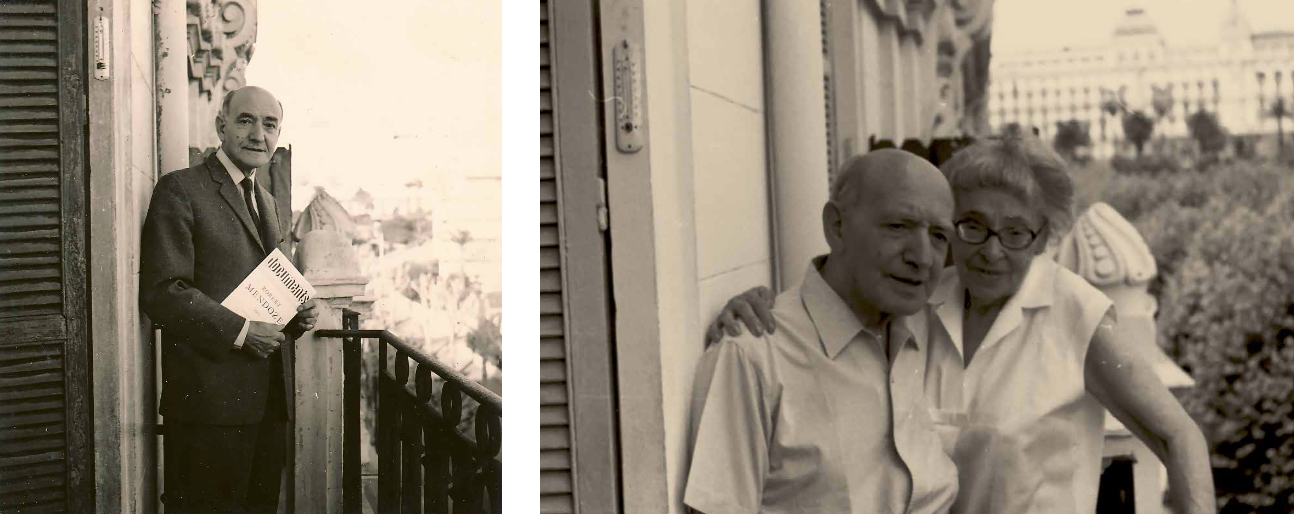
They lived together in the apartment in Nice which increasingly came to resemble a salon and function as an exclusive art dealership. Back in Paris, Kellermann had met and traded with the leading artists of the era, including Braque, Vlaminck, Utrillo, De Ségonzack, and most of all, his good friend André Derain. Not only did Désiré sell paintings by Derain,[18] but later, his son Michel Kellermann compiled the three-volume “catalogue raisonné” of the one-time fauve artist.[19] One could write a separate study on the activities of the Kellermanns, and it might even catch the interest of an international readership, but there is also an important Hungarian thread leading to them which is of particular concern to me. This was the other (by now at least the third) reason that I wanted to meet Cyla.
The name Michel Kellermann sounded familiar to me. Since I am a curator at the Czóbel Museum in Szentendre, it is almost always right in front of me. Most of the graphic artworks in the museum’s collection were donated by him, and a portrait showing him in his later years is an important item in the permanent exhibition. And thanks to Mimi Kratochwill, we are also aware of a much earlier portrait of Michel by Czóbel. The work, which was painted in 1926 and depicts Michel as a child, is known by the title Mon ami, Michel. It has always been very strange to me that so many photos of Michel Kellermann are found among the Czóbel documents that came to be in the possession of Mimi, including photographs taken of him as a child, suggesting that for some reason, Czóbel considered it particularly important to keep them.
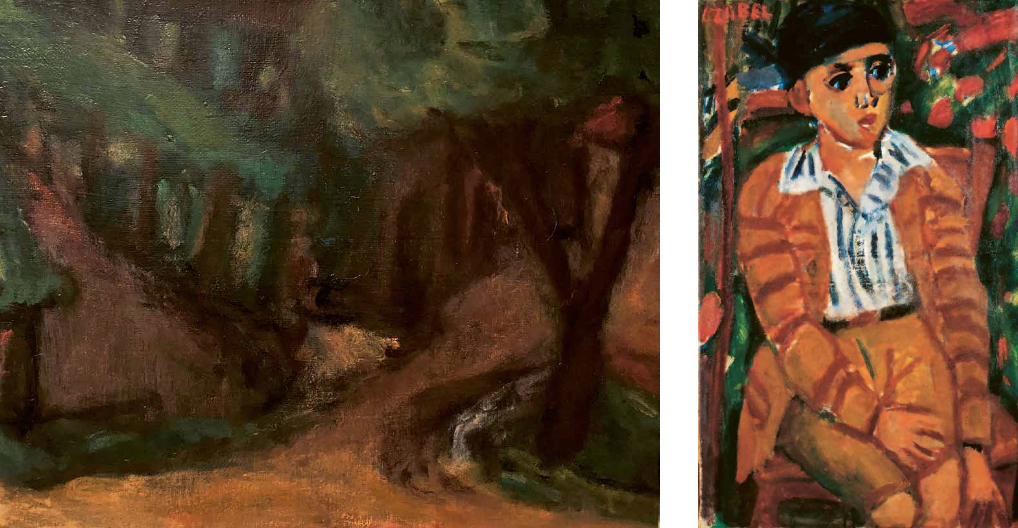
There is an anecdote which sheds light on this mystery. I learned of it from the accounts told by Cyla and his mother. It would make a lovely vignette that one might expect from the pen of an author like Krisztián Nyáry, but it also has relevance to the field of art history, if indeed it is true.
According to the accounts, sometime just before the outbreak of the First World War, one of Czóbel’s brief adventures in Paris had an unexpected consequence: the girl became pregnant, but the painter could not marry her, as he was already married. In order to help her, he turned in despair to his friend, Dezső Kellermann, who was still single at the time. Dezső’s, that is, Désiré’s beloved Juliska was still living in Hungary at the time with her bohemian husband, Rezső Bálint, who was gambling all their wealth away at the card table, so Dezső married Czóbel’s girlfriend, unaware of the fact that she was pregnant with Czóbel’s child. Nine months later, the woman gave birth to a boy who was given the name Michel. This is the man to whom Czóbel refers as his friend in the aforementioned title.[1] If all this is true, then Michel Kellermann is the second child of Béla Czóbel, although born out of wedlock and never acknowledged by Czóbel as his son. With this in mind, it is hardly surprising that Kellermann donated 140 graphic works by Czóbel to the museum. (According to another anecdote from much later times, Czóbel passionately insisted that Kellermann and Juliska marry each other if they were so in love, but Désiré’s wife, i.e. Czóbel’s ex-girlfriend, who was about sixteen years older than Dezső, did not want to divorce him. At this point, Czóbel suggested that he would be more than happy to testify in court that Madame Kellermann was a slut. Nothing came of this, as Juliska didn’t want to hear a word of Czóbel’s plan.)
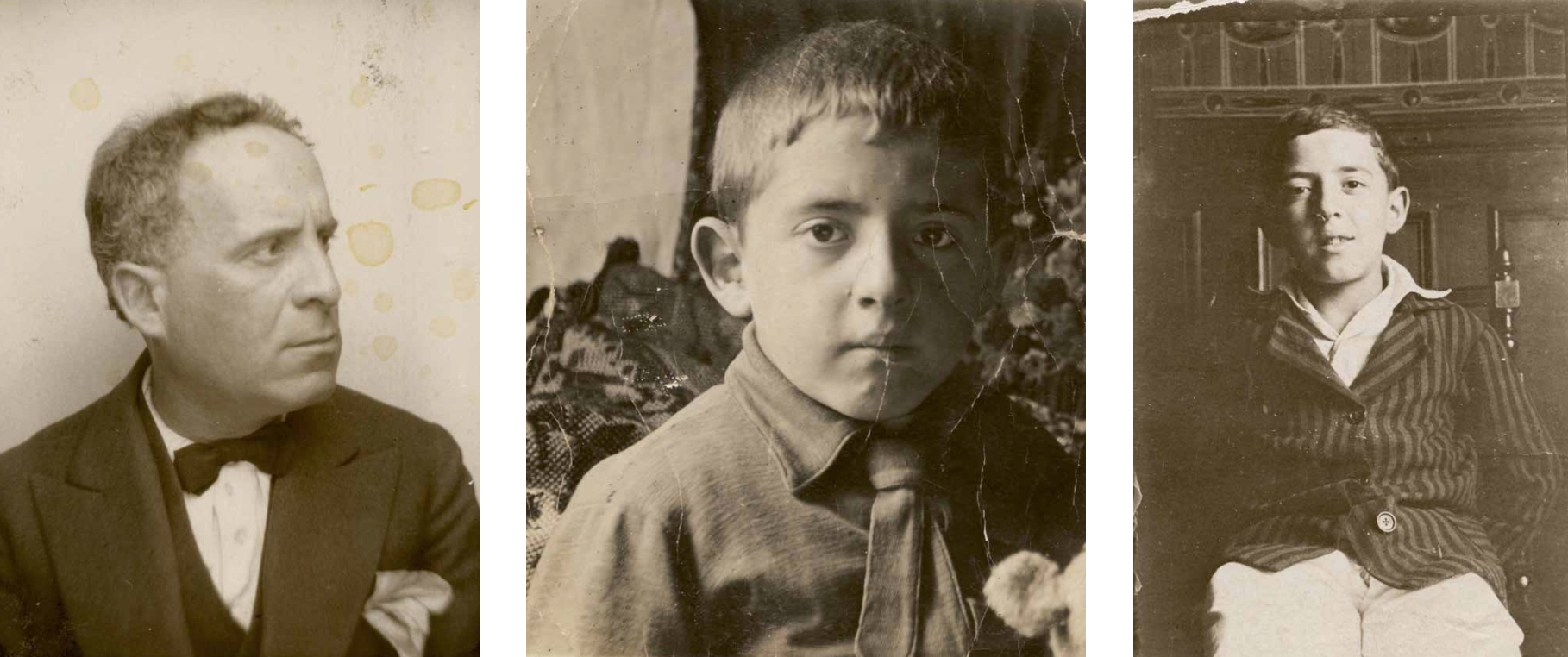
It is also worth noting that the latter event occurred in Nice, and we also know that Czóbel’s divorce was announced in Nice. Strange coincidence. Czóbel therefore was connected to Cyla’s family by many threads. Béla Berger collected and bought and sold his paintings, but Juliska and Kellerman also contributed to his financial security, and he was a regular dinner guest at their home. Juliska’s sister, Klára Windt (to whom we shall also return later), also owned two works by Czóbel which undoubtedly came into her possession from Dezső Kellermann and Juliska. Today, only one of Czóbel’s paintings, a landscape of France, remains in the family’s possession, but this previously unknown work is another addition to Czóbel’s oeuvre.
A Family History, Chaper 4.
Klára Windt and József Csáky
On my first visit (there would be several to follow later), as he had already mentioned the work during our phone conversation, Cyla brought out a small terracotta statue. When I saw it, my jaw dropped. He recounted this experience of mine in a much funnier manner, and he immediately uploaded it to his Instagram vlog. Allow me to quote from the vlog: “[then]I had to rouse myself all frantic, because, imagine, Gergő, wow, boy, was coming! An art historian. And imagine, he once wrote to me like that, because he had read in one of my stories that […] - otherwise he is totally sympathetic, he has two daughters [three – B.G.], that he had heard a report with me according to which Rudolf Bálint, or Rezső, depends on you, was a relative of mine, you know, my great-grandfather, the painter. And then Gergő tells me, imagine he didn't believe me […] now listen, I tell him [this was on the phone before we met], Gergő, if you want, I'll show you - I know it is my great-grandfather that interests you - but I also have a very adorable cubist sculpture by Joseph Csáky. […] I think he was probably thinking like “don’t kid me man”, don’t tell me, were you dropped on your head as a child, or what the hell? Did you fall out of the crib? Cyla, where would you have gotten a Joseph Csáky sculpture from? Well I’ll tell you what, the dude came on Sunday, and you know, I’m showing it to him… See, this is what I was thinking of! […] Imagine, he collapsed. He said: Dammmmnnnnn Cyla, I can't believe this, it really is a Joseph Csáky! I tell him, ok, so what were you hassling me for, My little Geri?”
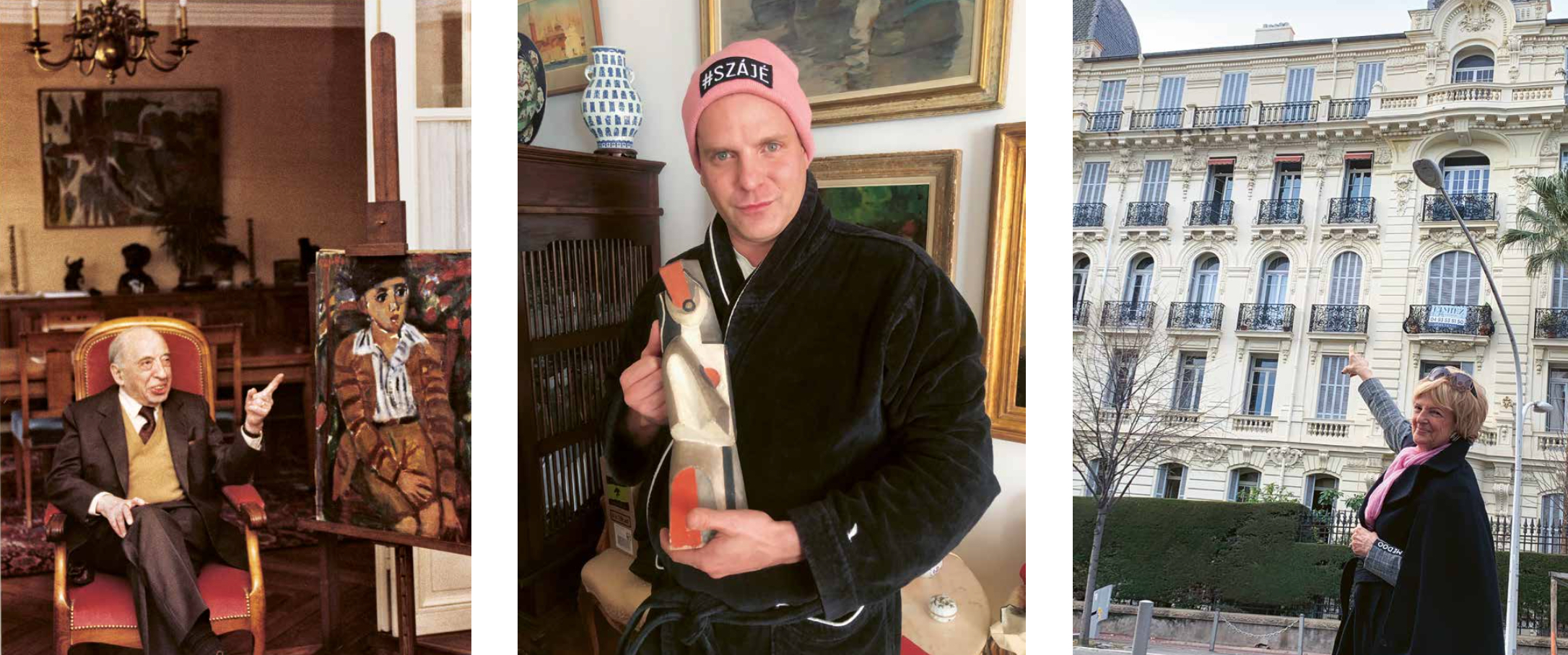
It really was hard to believe that a real par excellence Cubist sculpture was hiding in a little apartment in Buda, for I have been engaged with this subject matter recently. For nearly eight years, I have been working on preparations for an exhibition exploring the art of Hungarian cubists with my colleague Zoltán Rockenbauer. (Incidentally, I was extremely lucky with my timing, because the little sculpture and everything I saw at Cyla’s apartment was only temporarily in Hungary. Two weeks later, almost everything was taken back to the residence in France.)
In the last couple of years, I have managed to locate more than one hundred (!!!) lost or previously unknown cubist works, including several works by Csáky (sculptures, but mainly graphics), of which his biographer was unaware. But I have never come across a single original work that was not from a series of casts. In addition, the form and colouring of the statue were familiar. I was sure I had seen a reproduction of it somewhere, at least in black and white.
Returning home, of course, I immediately turned to Félix Marcilhac’s monograph on Csáky, and I soon found a reproduction of the work in two separate locations in the book.[21] The small painted terracotta statuette had been thought lost for exactly 100 years. Unfortunately, the biographer never learned about the find, as he died in his home in Marrakesh at almost the same time as I made my discovery.
According to the data in the “catalogue raisonné”, the sculpture was transferred to the gallery under an exclusive contract between Csáky and Rosenberg, who sold it for a profit of 100 francs a year later, in 1921, to one of the greatest collectors of the age, Jacques Zoubaloff. Zoubaloff in turn auctioned it off together with his entire collection in 1935.
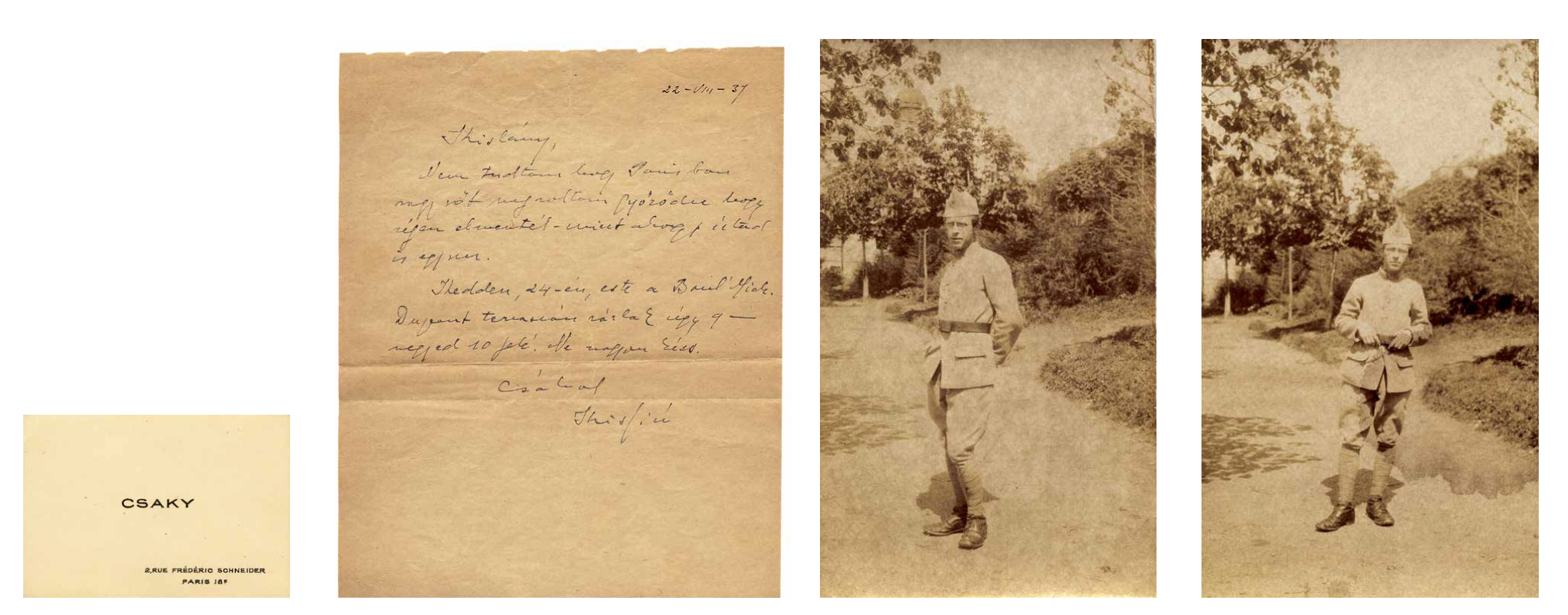
The question immediately arose as to how, if the data in the oeuvre catalogue is correct, the small sculpture ended up in Cyla’s and his mother’s possession, who claim that it was originally owned by Klara Windt (Clara Windt), Cyla’s great-grandmother’s sister. The latter had been the younger sister of Juliska. She had earned her keep as a governess in and around Paris. According to Cyla and his mother, Csáky had courted Klára for a long time, and she had received this sculpture from Csáky, along with another smaller work, also terracotta, from a period following his Cubist years. In addition to the discovery of the sculpture(s), the knowledge of this secret love was similarly important, as it had gone unmentioned in the secondary literature. As if to prove that this was not just an “intrigue amoureuse” or a family legend, in addition to the sculpture, eight small envelopes with Csáky’s handwriting on them were soon found, each of them addressed to Clara Windt. At Annamaria’s place in Menton, another three letters came to light as evidence of this secret love. It is clear from the content of the letters that a long, passionate liaison was formed between Klára and Csáky, who at that point had been married for decades and was raising two daughters. The envelopes also contained two photographs of Csáky in military uniform which had been taken during the First World War. These unusual photographs, which as far as we know are the only copies, are now being reproduced here for the first time, as is a colour photograph of the sculpture.
Returning to the mystery surrounding the question of provenance, it remained a possibility, of course, that the data in the “catalogue raisonné” were not incorrect, that the work had indeed once been part of Zoubaloff’s collection, and that the story of Klára Windt (which in light of the documents, appeared solid as stone) was also true. It could be true if, after Zoubaloff auctioned the work, the sculpture found its way back to the artist, although I have yet to find a convincing explanation for how this could have happened unless the artist himself bought it back. Both statements could also be true if there were actually two different sculptures, i.e. variants or copies of each other. I quickly dismissed this possibility because I had a high-quality copy of an archival photo taken of the original sculpture in 1920. The archival photo was made available to us by Amélie Marcilhac last May, when we looked over the entire Csáky documentation in their gallery.[22] At that time, of course, I knew nothing about the existence of the sculpture, but I took a photo of the archival photo as a WANTED work, as I thought it would come in handy for the exhibition. And it did, for I was able to compare it with the original sculpture. Since the original photograph was of sufficiently good quality, it was suitable for comparison, and it became clear that the sculpture I held in my hand was the same as the one of which Marcilhac’s monograph contained an image. But how can the data regarding the sale make sense if the work was given to Klára by Csáky himself?
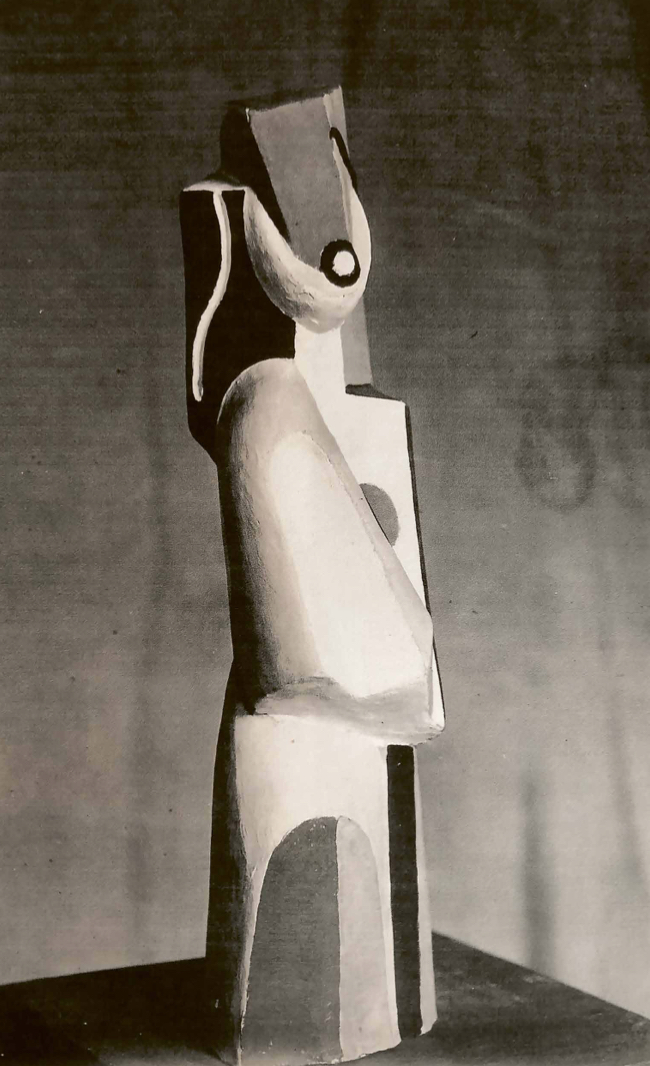
On the back of the original photo was a brief handwritten inscription[23] with the plate’s reference number above it: 360/7099. Fortunately, we had previously photographed all of Léonce Rosenberg’s documents pertaining to Csáky in the Kandinsky Library at the Center Pompidou, so we had a register (or at least an excerpt) of photo plates.[24] In the list, only the word “Sculpture” appears below the abovementioned number. A little bit further up (there are missing numbers and jumps in the serial numbers), next to the number 328, however, a title and information are found that fit our sculpture far better: “Figure terre [cuite] polychr. [omé]”. In order to assure myself that a mistake had been made in the numbering or somewhere else – if indeed a mistake had been made – I would need to see the original photograph no. 328, but for that, I would need to take another trip to Paris. Because of the coronavirus, I can’t even entertain that thought for a while. It is also conceivable that there was another polychrome terracotta sculpture with a completely different composition, but no trace of this can be found in the monograph. According to the data in the “catalogue raisonné”, the work in question, that is to say, the work which has been photographed, was signed by the artist. In contrast, there is no signature visible on the work in the photograph or on the recently located sculpture. This is certainly attributable to a simple mistake in the data.[25] One also finds here that, following completion of the work, it was registered on August 6, 1920, sold for five hundred francs on October 18, and sold to Monsier Zoubaloff on December 21, 1921 for six hundred francs.
In a letter to Rosenberg dated October 15, 1920, Csáky informed his gallerist that the terracotta sculpture, which he had seen before, had been completed and coloured, and that he would be waiting for them to meet the next day. The data given above, then, appears to be correct, at least until the sculpture came to be at Rosenberg’s gallery.[26] As mentioned earlier, Zoubaloff auctioned off his collection in 1935 at the Hotel Drouot. I managed to order the original catalogue on the internet, which includes a painted terracotta sculpture by Csáky called Figure de femme (Female Figure).[27] This certainly would make a suitable title for the statue that has just come to light. The data concerning the dimensions, however, do not correspond exactly, as the height of the recently found sculpture is thirty-six centimetres, while the one in the catalogue is recorded as having been thirty-eight centimetres tall. Of course, the discrepancy could be due to a mistake in measuring, or perhaps the sculpture (which is hollow inside and therefore slightly precarious) had been given a thin, temporary pedestal. Since there is no reproduction of the sculpture in Zoubaloff’s catalogue, it is difficult to decide whether the sculpture that has recently come to light was the one which was auctioned off by the renowned collector or if it was a terracotta by Csáky that for the moment remains unidentified.
One thing is for sure, Csáky gave the sculpture (the one which was reproduced in the monograph!), to Klára Windt sometime in the 1930s, and she kept it for the rest of her life. The course of Klára’s life and the fate of the statue after this are also interesting.
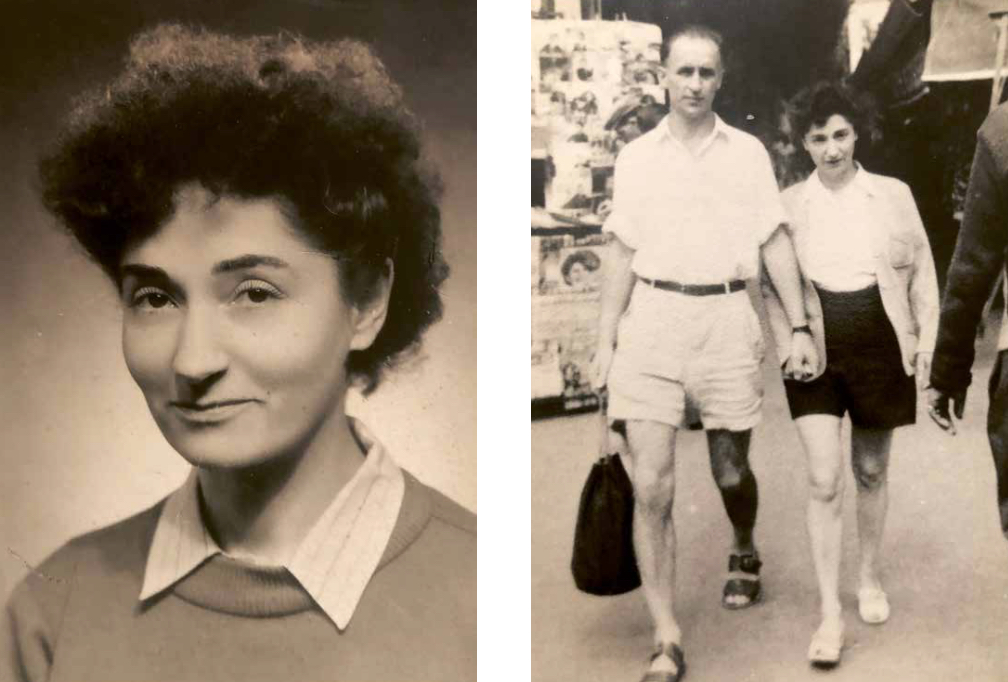
Klára probably became acquainted with Csáky through her brother-in-law, Rezső Bálint.[28] Their rhapsodic relationship lasted from 1932 until 1937, at least according to their letters. His wife Marguerite may have known of their relationship, as she was frequently and openly unfaithful to her husband at the time.[29] Another man became embroiled in this love story, which seems fitting for a French novel. While in her affair with Csáky, Marguerite met a young German man named Hans Günther Schulze, who was in Paris at the time for his studies and work. The two of them also began having an affair, which even the outbreak of the Second World War did not bring to an end. Hitler had ordered all German men to return to Germany before the war, and Günther therefore had had to return to his native land. He joined the army, and during the German occupation of France, he returned to Paris, where his knowledge of French was put to use and he was given the task of monitoring, intercepting, and eavesdropping on calls. Günther had no idea that Klára, who had been raised in a Catholic institution, was Jewish, so it never occurred to him that his beloved might in some way be incompatible with him. They continued their affair during the German occupation. Günther would change out of his uniform in the stairwell to visit Klara even during the most dangerous times of the conflict. They were still together when the war ended, and they got married. Klára died in 1974, and she never said a word about her family origins. Her death was a terrible blow to Günther, as the two of them had lived almost entirely for each other. He didn’t touch anything for thirty years, leaving everything as it had been on the day of Klára’s death. Her dress was still hung out, and next to two Guerlain perfume bottles stood the Csáky sculpture with Klára’s string of pearls on it.
During the period of mourning, Günther met one of Klára’s friends, and she remarked in conversation with him how lucky Klára had been to survive the Holocaust. Günther was shocked, as he had repeatedly asked Klara about her ancestry when he had introduced her to his parents. He had done this because his parents had suspected that her family was Jewish, but he had taken Klára at her word, and she had strenuously denied it.
This story would perhaps be most fitting for the pen of a gifted novelist, but the fact that the sculpture survived and has now been found is unquestionably relevant to the field of art history.
It is important in part because we do not know of any other coloured terracotta sculptures from Csáky’s Cubist period, so it is an absolutely unique piece and constitutes a noteworthy discovery in the international history of Cubism as well. At least as important is the place of the work within the artist’s oeuvre, as Csáky was on the brink of a stylistic change at the time. This is his first, still very uncertain step towards art deco, as becomes particularly apparent if one looks at the similarly coloured stone sculptures and reliefs that he did in the coming months and years. A series of watercolours could also be mentioned here, in which, building on the visual world of Cubism, he set out on the one hand in the direction of purer forms, sometimes including abstraction, but also, on the other, towards decorativeness. In particular, the minimalist rounding off of the lips and the stylized shaping of the wavy locks of hair will again appear in works made between 1920 and 1922, of which this experimental piece could be seen as a kind of progenitor or the most important antecedent. (Only in parentheses and for the sake of entertainment do I note that we encounter very similar formal solutions in the famous Modiano poster by Róbert Berény, one of the greatest Hungarian art deco poster designers.)
In any case, the recently discovered terracotta sculpture can definitely be included among the Cubist works, so it is certainly interesting, from the perspective of the exhibition we are planning entitled Hungarian Cubists, to note that the family owned another Csáky sculpture. Csáky carved a bust of Dezső Kellermann’s daughter when she was twelve, but it has not been identified, nor indeed have any plausible hypotheses been put forward as to its possible location. [30] There are still plenty more works that are “WANTED”!
A Family History, Chapter 5
The Révais
They are fairly distant members of the family, yet they are an important part of the family history.
On my first visit, some of the walls seemed empty. There were pictures missing here and there. It turned out that a whole series of photos was on display at the Budapest History Museum’s Au Revoir! exhibition in the castle, most notably, photographs by Ilka Révai, whose emblematic portrait of Kassák is well-known. Another photo by her showing Kassák, which was reproduced in the catalogue of the 1919 exhibition organized at the old location of Ma (“Today”) in Váci Street, is at least as powerful, but was previously unknown to me.[31] The small advertising image for the Révai studio was designed by Sándor Bortnyik, who was also someone in Kassák’s Ma circle. I am no expert in the history of photography, but it is clear even to me how little attention has been given by art historians to Ilka Révai’s oeuvre, although Révai, who had ties to the Activist movement, is important not only because of her photographic output, but also because she was the host of one of the most prominent intellectual salons of the age. Modern writers, poets, artists, and, of course, other photographers attended the gatherings in the apartment and studio on Szentkorona Street, as did artists who were young at the time, such as the poet Attila József, who poured the memory of his unrequited love for Ilka Révai’s daughter Éva into a poem.[32] It will hopefully not make my essay seem too much like an article in a gossip magazine if I note that, after having been rejected by Éva, József turned to her mother for solace, though Ilka at the time was 52 years old and, even if one tries to be generous, could not have been called beautiful. This is no urban legend. József himself spoke of it.[33]
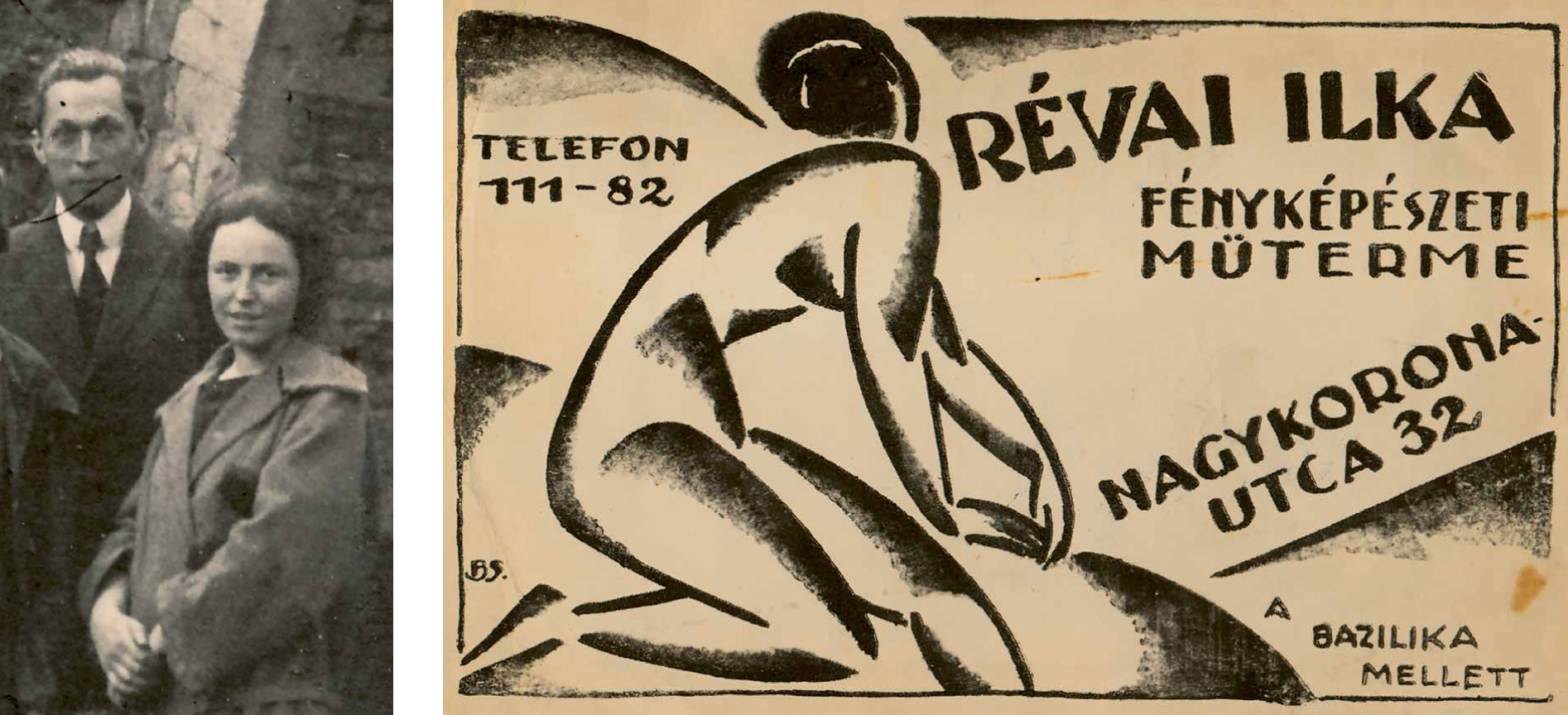
It soon became clear that old and some quite recent family memories cherished by Cyla and his circle of relatives were connected less to Ilka than to her daughter. One reason for this is that Éva Révai died in 2006, at the age of 101.[34]Her oeuvre is even less known than that of her mother, though she is connected to the artistic life of Paris by even more threads.
Life seems to have given her the role of a kind of muse, for after she had been courted by József, when she was in Paris, she was pursued by André Kertész for a brief time. Kertész also made several portraits of Éva and her mother Ilka, as well as portraits of the two of them together.
Éva also brought André Kertész in on an art project, asking him to photograph some of her creations, modern artistic arrangements of artificial flowers made of silk and organza for the salon of Paul Poiret, the famous Parisian fashion dictator. Éva Révai began making artificial flowers in Budapest, creating mainly bellflowers, from original silk imported from Japan. They were used mostly as accessories for hats and coats. She burst onto the stage of the fashion life of Paris in the second half of the 1920s with these unique works, and she soon found herself in close proximity to some of the greatest figures in this field. Her modern fashion items were exhibited with great success at the Salon d’Automne in Paris in 1925, and she garnered laurels in London and later in Germany and Italy. Newspapers and fashion magazines reported on her international successes. Unfortunately, only one of her silk artificial flower arrangements has survived as a memento in the family, and of the original photos, we know of only one that was unquestionably taken by Kertész. Although the collection includes many similar photo compositions, further research would be necessary to identify them.
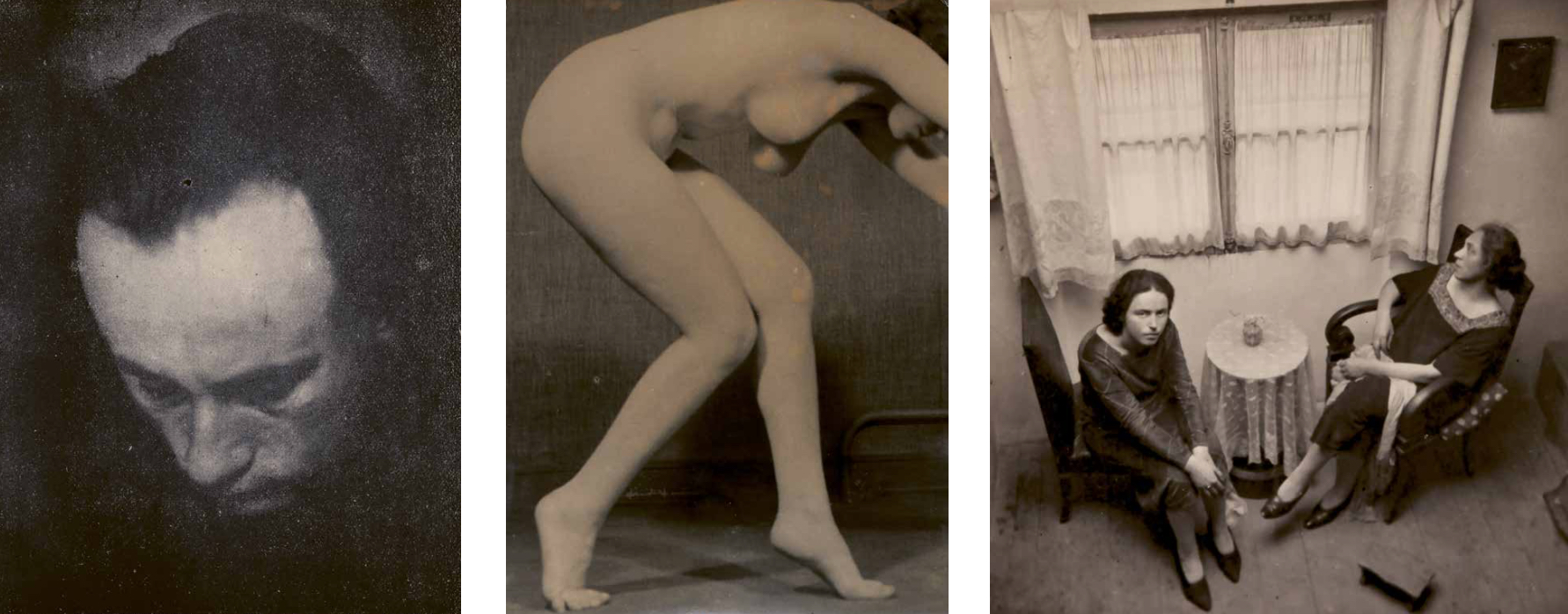
As it so happens, other photographers also made photos of Éva and her creations. For example, in one of the drawers was a series of photographs taken by Ergy Landaut, who was at the top of the list of great Hungarian female photographers. The photographs show jewellery that Éva made using vitreous glass enamel and resin, and in most cases, the model wearing the jewellery was the artist herself.[35] Works of original synthetic resin jewellery were discovered in the garage, or at least a significant share of them, as were the tools Éva used to make this jewellery, which at the time was extremely fashionable and decidedly chic. Annamari recounted how Éva even worked on the décor for one of Poiret’s grandiose fashion shows. The fashion show was staged on Poiret’s enormous yacht, where an artificial aquarium was erected as a dividing element in which Éva’s silk creations served as simulations of aquatic plants. (Éva, by the way, met Sári Fedák in Paul Poiret’s elegant fashion salon, as she also garbed herself in outfits made by the famous designer.) She also worked for other fashion houses, such as Worth Paris, House of Carven, and even Coco Chanel and the House of Dior. They ordered accessories and buttons from her. Sometimes, when she couldn’t keep up with the volume of orders, Juliska Berger (i.e. Windt) helped out.
The fate of the two Révais during the Holocaust is also shocking and unquestionably deserves the pen of a sensitive novelist. Éva remained in Paris and escaped thanks to her husband, Miklós Marsovszky, but Ilka returned home, as the Nazis declared that if Hungarians wanted to protect Hungarian Jews, they could only do so at home. At the time, Hungary was still observing the war from a theatre box, so to speak, and for Ilka, the situation in Budapest seemed safer. In 1944, however, she disappeared without a trace. She was either shot into the Danube by members of the Arrow Cross or was transported to a Nazi death camp, where she perished.[36] Éva could never forgive herself for her mother’s death. The entire content of her last letter from Ilka was cut by the censors, leaving only the greeting and the farewell. This is how the letter was sent to Paris. This is the last physical trace of her… Annamari and Cyla have kept it, much as they have kept so many other things for which posterity must be grateful.
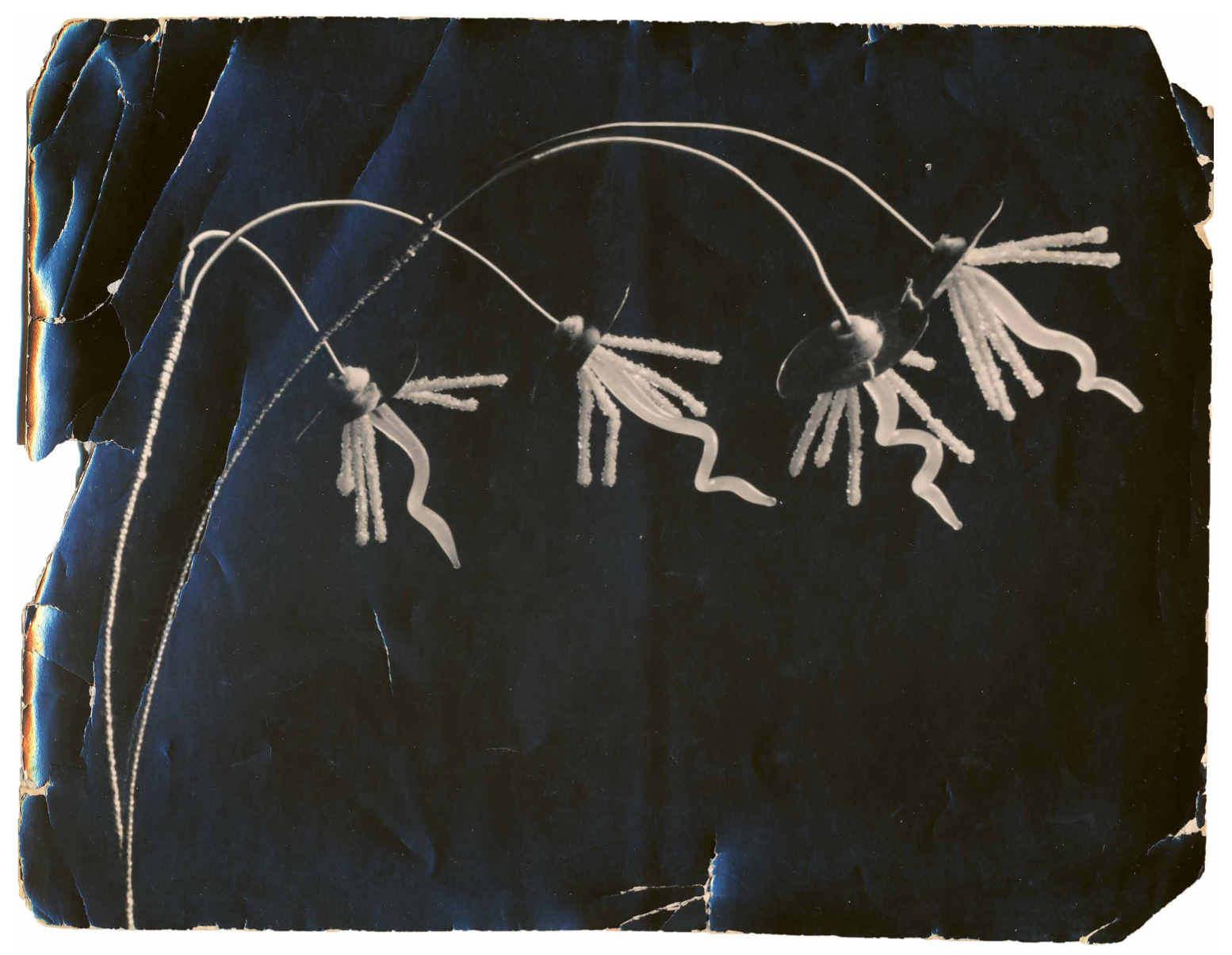
I am sure that there would be much more to explore in each and every chapter of this family novel, yet simply by scraping the surface, I have come across a few findings which are of interest to the field of art history. I would like to express my gratitude to Csaba Kajdi for giving me access to his treasure chest of items and memories, and his charming mother, Annamari, who tirelessly searched for documents to help me with my research in recent months. I will cherish my memory of the oral history I recorded with her, which at times was shocking and at other times was funny and uplifting, and it will also provide a solid foundation for my work. Many thanks!
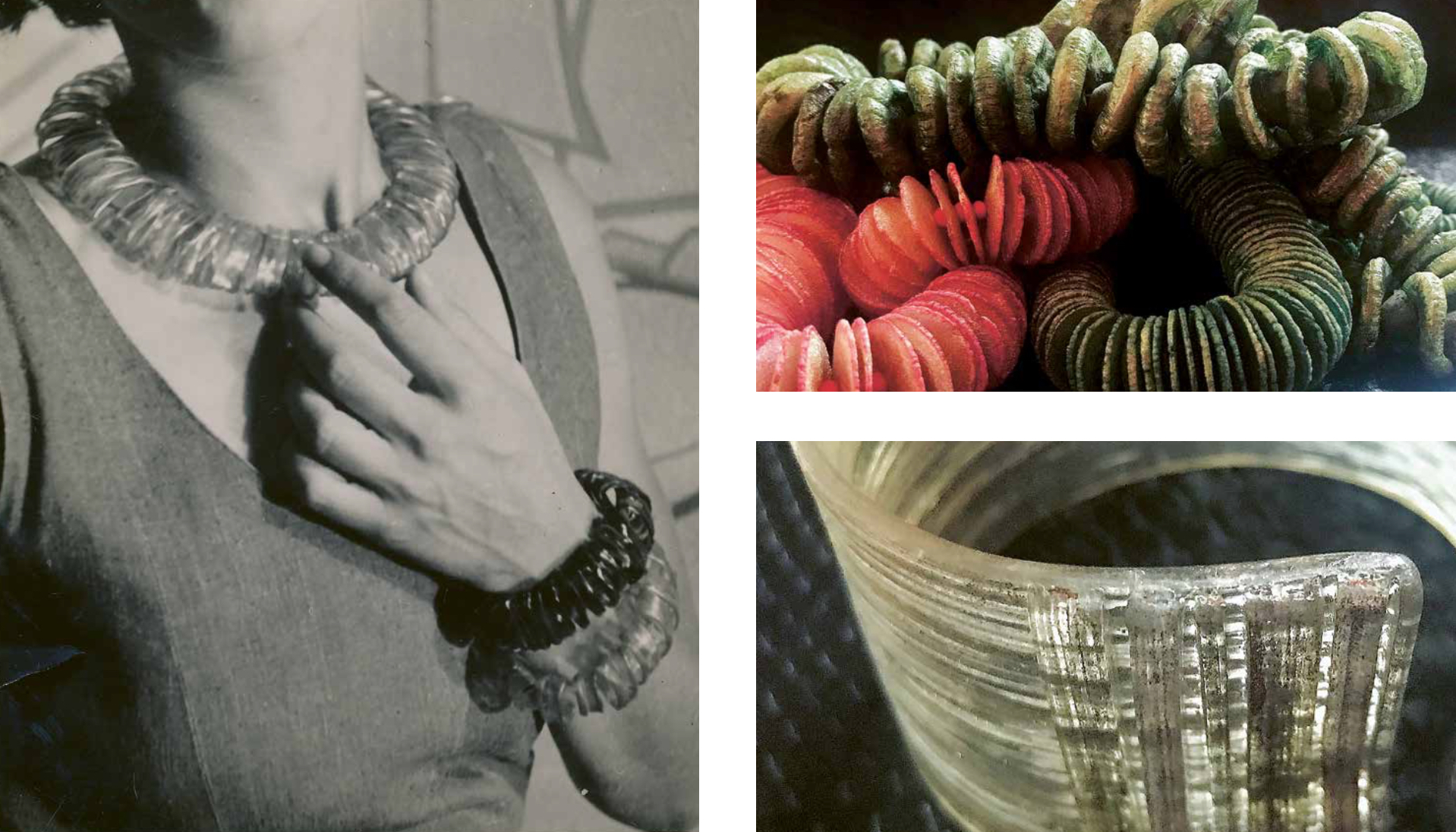
Undoubtedly a gifted writer could produce a family novel based on the stories of Cyla’s ancestors, or even a series of family novels. I suspect it would be a bestseller.
The most important lesson for me, however, is that treasures small but also rare may be hiding somewhere surprisingly nearby, perhaps even including internationally significant masterpieces. If six months ago someone had told me that I would come across a Cubist Csáky sculpture in the apartment of an influencer, I undoubtedly would have laughed and given them little more than a dismissive wave of my hand.
But now, I’m preparing myself for the next exciting discovery!
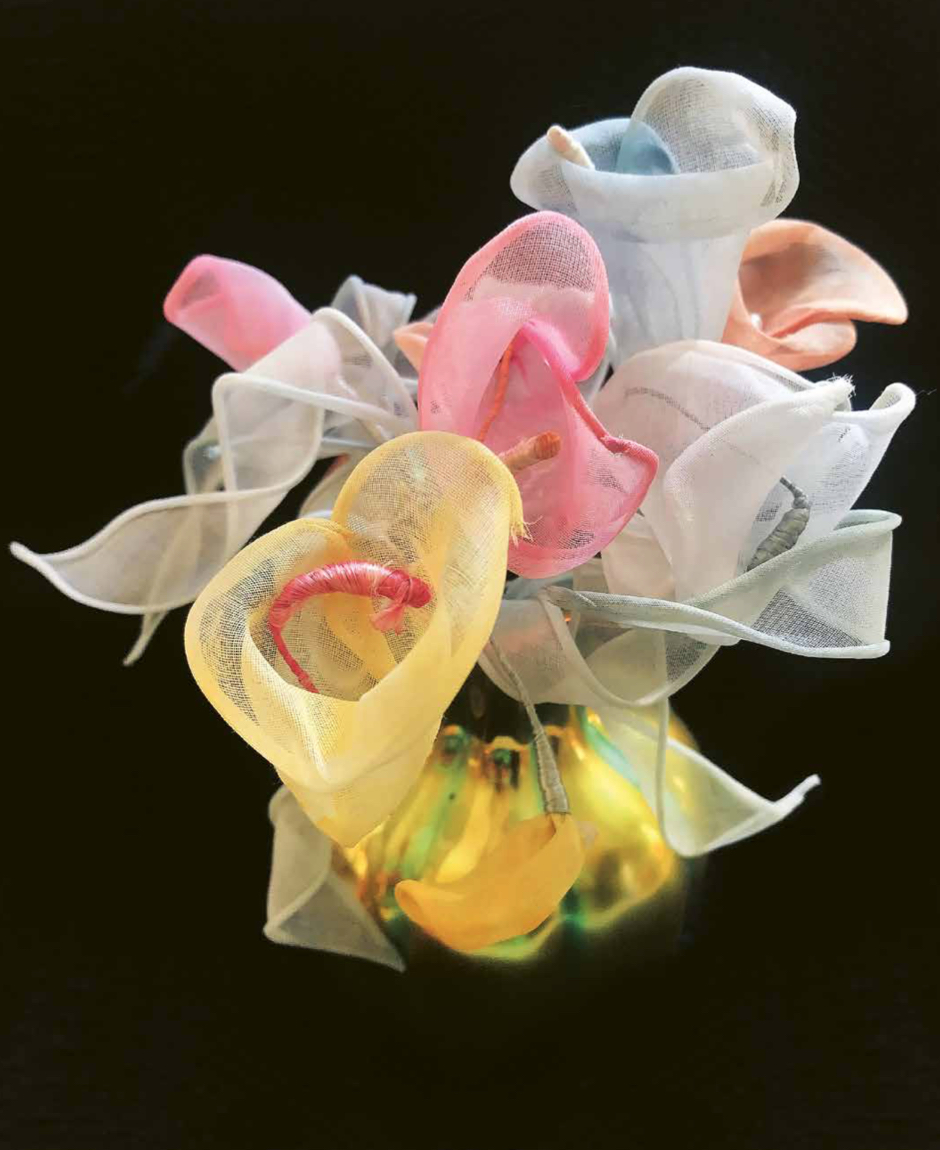
[1] I would like to express my gratitude to Márton Bárki, who drew my attention to this important source.
[2] I would like to express my thanks to Rita Ruszina for helping me get in contact with Cyla.
[3]Ferenc Bodri: Egy elfelejtett magyar könyv Modiglianiról. (A forgotten Hungarian book on Modigliani) In: Művészet (Art), 1970 /7., pp. 47–48.
[4]For additional information see: Gergely Barki: Children in the Garden. In: Annales de la Galerie Nationale Hongroise 2002-2004. 24/9 (Hungarian National Gallery, Budapest, 2005), pp. 71–72. Data concerning the pen and ink drawing: Róbert Berény: Painter (Rezső Bálint drawing), 1917, paper, mixed media, 28 x 22 cm, signature and inscription on bottom right: To Rezső Bálint in 1917 [illegible] in memory BerényR, priv. coll.
[5]To this day, this remains perhaps the most complete biography of Rezső Bálint. Gergely Barki: Rezső Bálint. In: Magyar Vadak Párizstól Nagybányáig 1904–1914. (Hungarian Fauves from Paris to Nagybánya) eds.: Krisztina Passuth–György Szücs. Hungarian National Gallery. Budapest, 2006, pp. 248–249. A more complete biography and a thorough survey of his oeuvre will be published in an upcoming issue of Artmagazin.
[6]Gergely Barki: WANTED – Maga a mű „kerestetik”. (WANTED – the work itself is “sought”) In: Artmagazin, no. 2005/7.
[7]Rezső Bálint: Study. In: Nyugat (West), 1912/ 7. image supplement
[8] In his official documents, Rezső Bálint remained Berger (Rudolf Berger), as did his other brother Jenő. Both took up the alias Bálint. The painter changed his name Rudolf to the more Hungarian sounding name Rezső.
[9]gl.: Egy pesti fiú karrierje és tragikus halála Párisban. (The career of a guy from Pest and his tragic death in Paris) In: Esti Kurir (Evening Courier), September 17, 1938. p. 6.
[10]Zseni Várnai: Fényben, viharban. (In Light, In Storm) Budapest, 1958; republished: Zseni Várnai: Egy asszony a milliók közül (One Woman Among Millions). Budapest, Szépirodalmi Kiadó, 1963 (On Rezső and Jenő Bálint and Béla Berger see: pp. 560–561., 566–569., 608–609., 612–616., 637., 664.)
[11]Rezső Bálint: Portrait of Gábor Peterdi, 1931. On the back: Gábor Peterdi: Self-Portrait with Pipe, oil on paperboard, 50 x 36,5 cm, inscription on bottom left: For Gabi, Bálint 931, on the backside, inscription on bottom right: Peterdi.
[12] The fact that Júlia Berger opened her gallery on Montmartre following her brother-in-law Béla Berger’s death strengthens my hypothesis. We learn of this from a letter written by Miklós Marsovszky to István Bibó on August 10, 1938, in which Marsovszky writes the following: “By the time you arrive, you will not find Juliska here. Juliska has since become a shopkeeper, her picture dealership will open at the beginning of September on Montmartre. You will visit her there.” Published: István Bibó the Y.: [edited]: Bibó István és Marsovszky Miklós levelezése. (Correspondence of István Bibó and Miklós Marsovszky) In: HOLMI, vol. 25., 2013/2., p. 227.
[13] I would like to express my thanks to Annamária Básti, who provided a wealth of information for my research. Special thanks for the scans and the walk through the house in Nice. I would like also to thank my wife, Júlia Kohonóczky, for being my partner and unflagging helper during my quest.
[14] The Kellermann family brought electricity to Kecskemét, so the nickname used to mock them was “thunderbolt Jews”. I was told this in person by Csaba Kajdi.
[15] Juliska left her two younger daughters in Budapest. She placed Zsuzsi, age nine, in a convent and Judit (Cyla’s grandmother) in a private nursery. When Rezső Bálint (Berger) returned from Brasov, where he had been at work painting a church, he learned that Juliska had left. He put Zsuzsi, the older of their two daughters, on the Orient Express for Paris, and he informed Juliska of this in a telegraph. He couldn’t find Judit, because by then the nursery had gone bankrupt and all the children had been sent to different places.
[16] Juliska left her daughter Zsuzsi (Suzanne) in the care of Miklós Marsovszky and his wife, Éva Révai, in the Nôtre-Dame de Sion convent in Paris. They had a tremendous amount of trouble with her, as Suzanne put everyone in danger with her irresponsible behaviour. For example: she went to Lutes to dance, which was the main headquarters of the Nazis, and she travelled first class with a second-class ticket. In Nazi occupied Paris, this was incredibly irresponsible, as they all could have been deported immediately. At the time, Ilka Réva, Éva Révai’s mother, was still in Paris. (More on them later too.) I was told this in person by Csaba Kajdi.
[17] Csaba Kajdi and his mother believe that Juliska’s daughter Judit (Annamari’s mother and Cyla’s grandmother) was not actually Rezső Bálint’s (Berger’s) child, but actually was Dezső Kellermann’s child. For this reason, Judit was disowned by the Berger family. If this is true, however, then Cyla and Kellermann are indeed related by blood.
[18]See: Letter from Dezső Kellermann and wife Júlia (Windt) to Endre Lázár de Bajom, May 5, 1971., priv. coll. Published: Anna Tüskés, HAS, Research Center for the Humanities [MTA BTK], Ref.: BLE PC 315.
[19]Dezső later worked together with his son, Michel, who was living in Paris and completed his studi
20 Michael Kellermann was born in 1914. Czóbel was living in Mont
